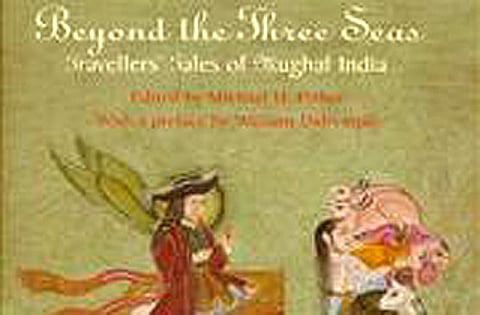
- Destinations
- Experiences
- Stay
- What's new
- Celebrating People
- Responsible Tourism
- CampaignsCampaigns
- Subscribe
- Buy Now

In the 16th and 17th centuries, large numbers of European merchants, priests and adventurers wandered around the Mughal empire in search of trade, souls or excitement. Quite a few of them wrote accounts of their travels, and this book contains edited selections from the writings of 10 of the best known.
Michael Fisher (the editor) and William Dalrymple (who contributes a preface) are both conscious that European travel writing on India is nowadays read mostly by post-colonial critics in search of colonial attitudes which they can solemnly condemn. Some of the writers included here have not been spared such treatment, but as Fisher and Dalrymple point out, in their case the charge is somewhat unhistorical, for they were in India in a period long before anyone thought of the European presence in terms of colony or empire. The travellers themselves had no reason to doubt that the Mughals and their officials represented the power in the land, as these were the people they had to deal with. One aspect that makes this selection so interesting is that it presents a European view of India from below they were in awe of the place.
This is not to say that they lacked prejudices. The merchants complained bitterly about untrustworthy carters, corrupt officials and oppressive governors. The Catholic priests predictably disparaged Indian religions Father Monserrate's scathing satire on the das avatars still has the power to shock. And their ignorance about the country led them into some weird muddles. Monserrate mistook some images of Jain tirthankaras for depictions of Christ's apostles, and thus as evidence for an ancient Christian kingdom in India. Peter Mundy's business trip to Patna in 1631 turned out to be completely pointless because the employer who sent him the instructions had meant to write 'Panjab'.
Such cameos are entertaining but they usually tell us more about the travellers than they do about India itself at the time. Other episodes are more informative. Sebastian Manrique's hair-raising account of negotiating the release from jail of a companion who had been charged with killing a peacock illustrates the operation of Mughal law, and affirms its compliance with regional customs &mdash in this case in Orissa. Elsewhere, Monserrate, who was a member of the delegation from Goa that went to Fatehpur Sikri in 1579 at Akbar's request, provides a vivid description of their reception. Taking them to a private apartment, Akbar apparently dressed up in Portuguese clothes and made the three little princes do the same. The Jesuits were thrilled, and took it as a sign of the emperor's readiness to convert.
Sometimes the travellers provide nuggets of information that are otherwise forgotten. Monserrate tells us that he saw 'an immense statue of an elephant' outside the gate of Gwalior fort. It is not there now, though the gate is still called Hathi Pol (and we now know why). In Delhi &mdash by which he meant the area around the Purana Qila since this was long before the building of Shahjahanabad &mdash he says there were gardens and mansions along both sides of the Jumna, allowing one to picture the fort at the heart of a wider urban context that is now lost.
Occasionally the information takes a little teasing out. Monserrate records that the city of Ujjain was said to have been founded by one 'Birbitcremas'. This name is garbled (unsurprising as the author was Portuguese and wrote in Latin) and the editor suggests he must have meant Vikramaditya, the ancient Indian king of mythic stature, who is believed by some to have held court at Ujjain. But from other things that Monserrate tells us about 'Birbitcremas' &mdash such as that builders and carpenters revere him as a god &mdash it is evident that he was actually referring to Vishvakarma, the divine architect.
